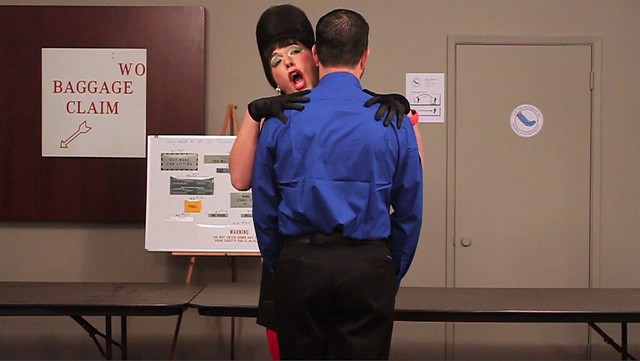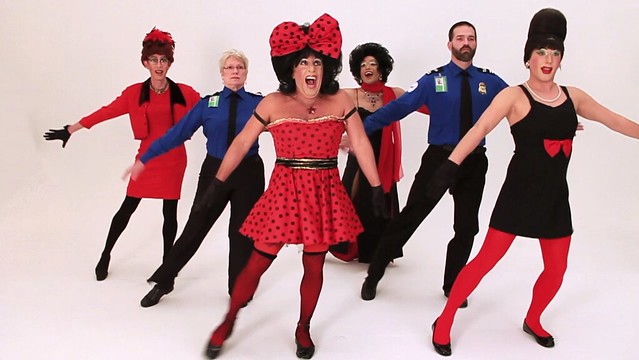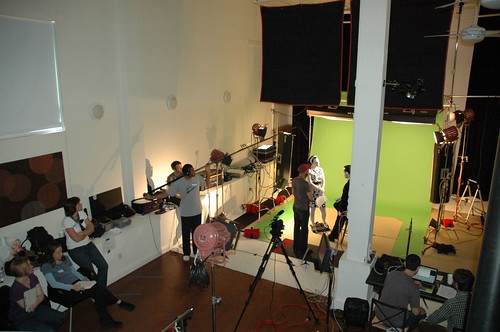For some time I thought that it might be fun and useful to start a thread in which the discussion is not about a specific film or projects, but as a sort of primer for wanna-be fan filmmakers on various aspects of production.
Basically, this is a place where you can share experiences and techniques you've tried and found working or wanting.
To kick it off, a few thoughts on...
Basically, this is a place where you can share experiences and techniques you've tried and found working or wanting.
To kick it off, a few thoughts on...
LIGHTING
Good studio type lights are expensive, large, and heavy, requiring C-Stands and some pretty substantial capacity on your circuit breaker. They're great if you can afford them, but a lot of people can't.
There are a number of other approaches. I'll toss out a simple one. One thing I like to use for simple shoots are paper/china ball lanterns. They're cheap, collapse flat for storage, come in different sizes, and you can load them with relatively inexpensive color-corrected bulbs. They put out a soft even light, which is great for ambient illumination or soft non contrasty light.

Paper Lantern (aka China Ball) Lighting
This above frame from a comedic music video I just did and this scene was lit entirely with four 16" paper lanters loaded with 150W.118V Halogen photo optic bulbs, and arrayed to hit the foreground and backround. The result is pretty good if you want nice even light without a lot of modeling. If you want something more dramatic, you'd need to mix in some other kinds of lights.

Studio Lighting (on a small soundstage)
This frame is from a different shoot location where we used more professional equipment but needed to maintain a consistent style with the shots made on a location. Here we bounced four studio lights off the white ceiling above the stage floor and off the top of the white cyclorama (above shot) to evenly light the cyc background. We then put a large bank of florescents to the right of the camera as a primary illumination, and another stage light reflected off a large white card to camera left to fill in the shadows.
We did this for two reasons, both having to do with speed.
Incidentally, this was shot with a digital SLR: a Canon T1i Rebel.
Anyone else have a tip, or technique to share?Good studio type lights are expensive, large, and heavy, requiring C-Stands and some pretty substantial capacity on your circuit breaker. They're great if you can afford them, but a lot of people can't.
There are a number of other approaches. I'll toss out a simple one. One thing I like to use for simple shoots are paper/china ball lanterns. They're cheap, collapse flat for storage, come in different sizes, and you can load them with relatively inexpensive color-corrected bulbs. They put out a soft even light, which is great for ambient illumination or soft non contrasty light.

Paper Lantern (aka China Ball) Lighting

Studio Lighting (on a small soundstage)
This frame is from a different shoot location where we used more professional equipment but needed to maintain a consistent style with the shots made on a location. Here we bounced four studio lights off the white ceiling above the stage floor and off the top of the white cyclorama (above shot) to evenly light the cyc background. We then put a large bank of florescents to the right of the camera as a primary illumination, and another stage light reflected off a large white card to camera left to fill in the shadows.
We did this for two reasons, both having to do with speed.
- Both lighting setups generally got sufficient illumination on anyone in shot no matter where they were, so we didn't have to worry about a lack of light that would affect setups and focus.
- By eliminating the need to change the lighting setup after setup, I was able to concentrate on getting as many takes and setups as possible in each place.
Incidentally, this was shot with a digital SLR: a Canon T1i Rebel.
Last edited:



